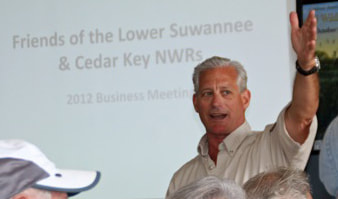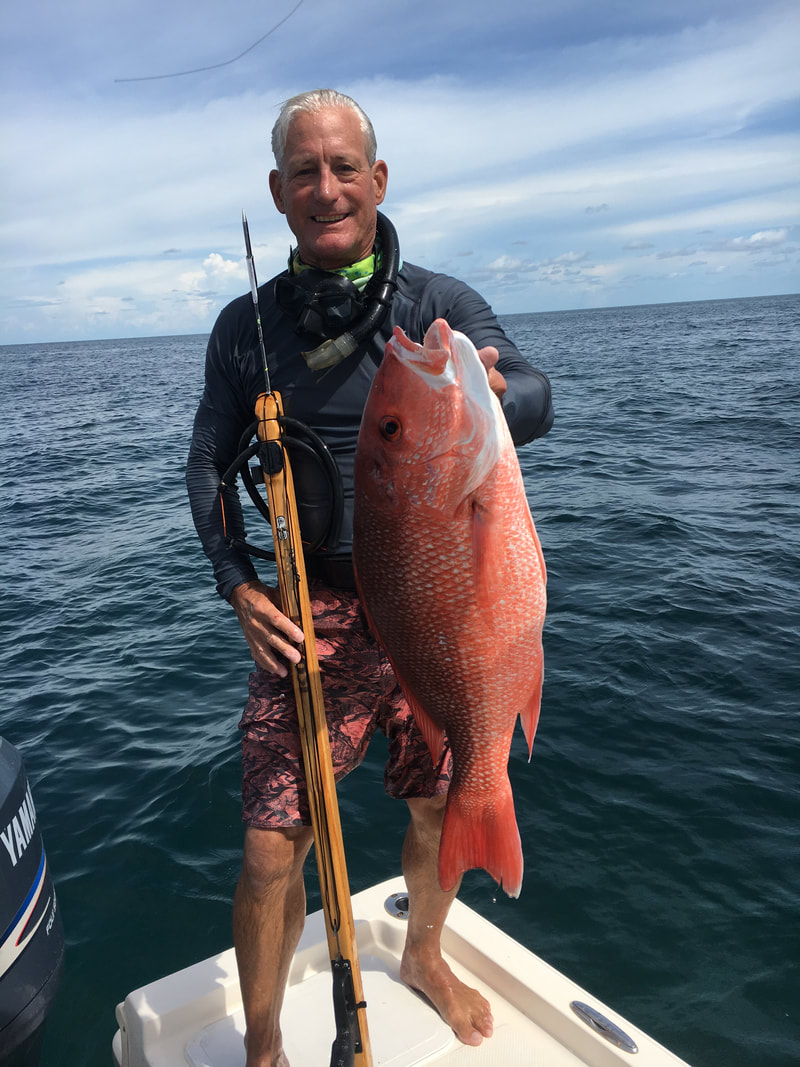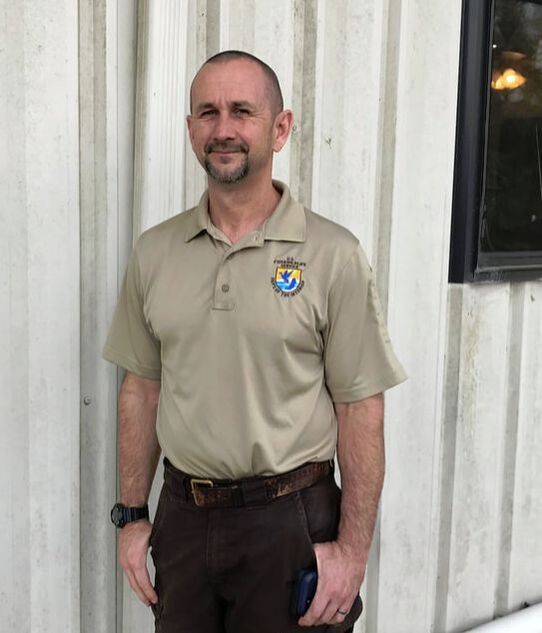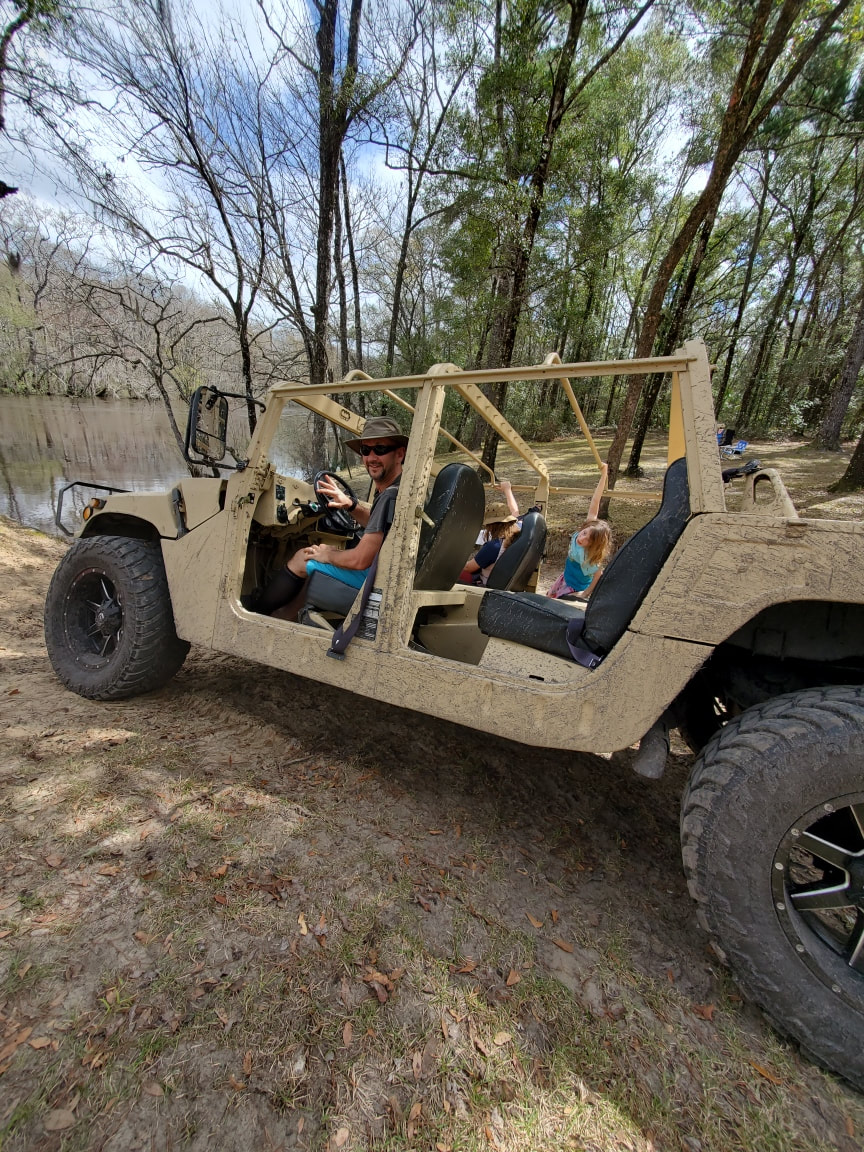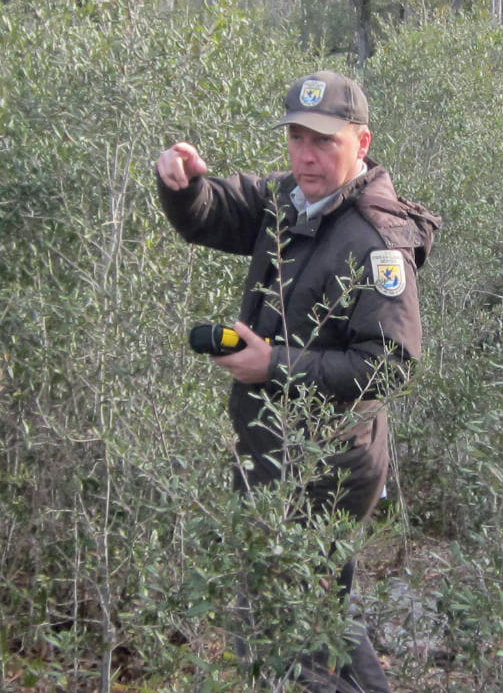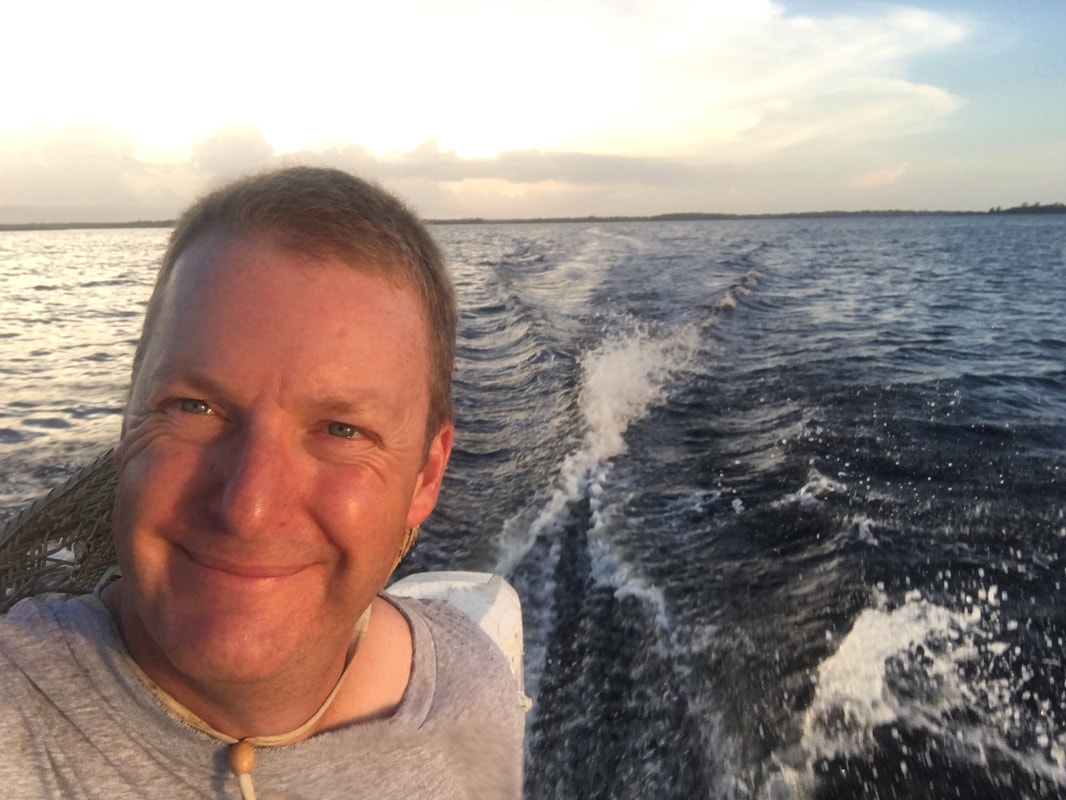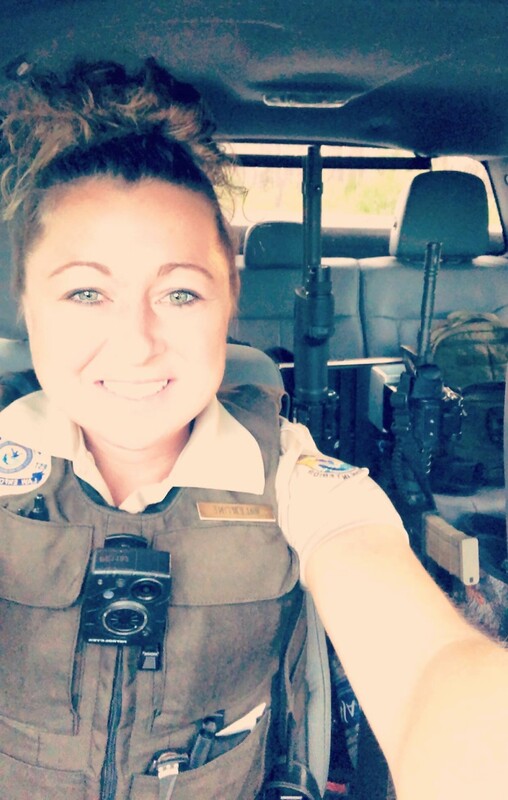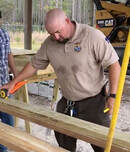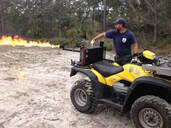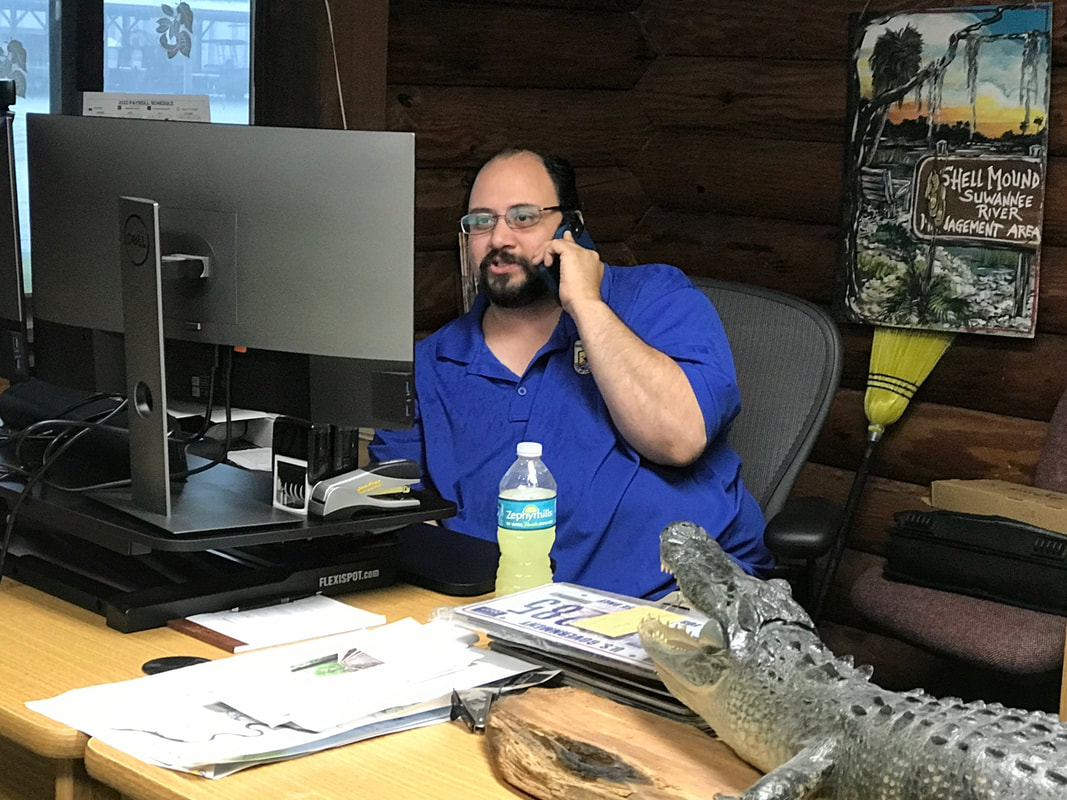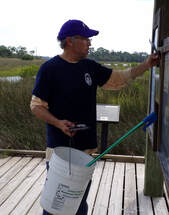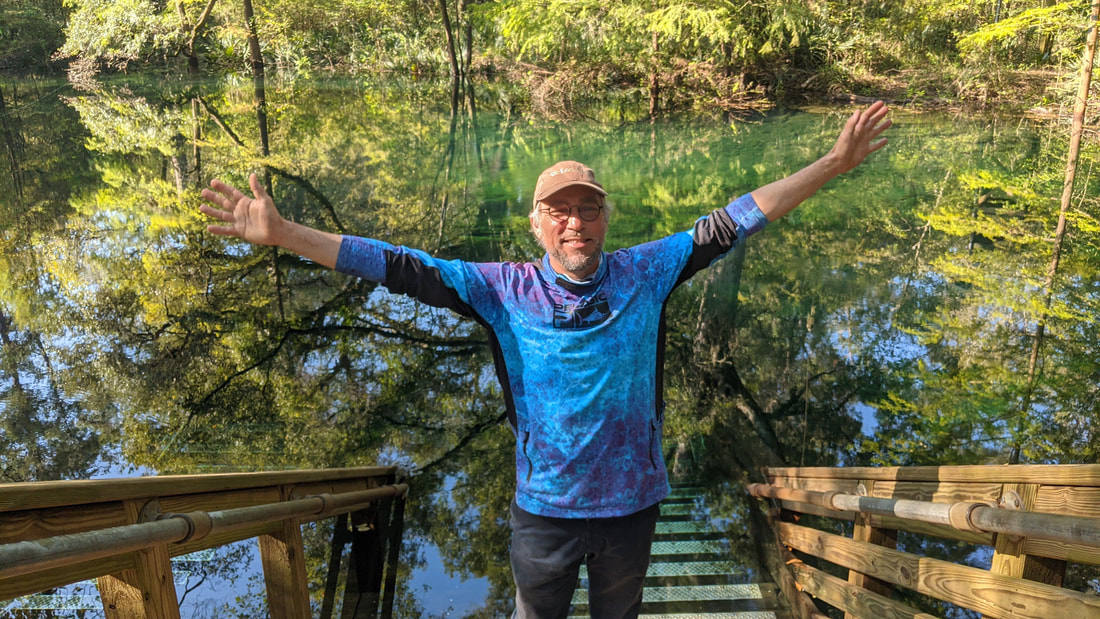Our Refuges
The National Wildlife Refuge System
Lower Suwannee National Wildlife Refuge is one of over 500 refuges in the National Wildlife Refuge System. The mission of the system is to preserve a national network of lands and waters for the conservation and management of fish, wildlife, and plant resources of the United States for the benefit of present and future generations. The refuge system encompasses over 93 million acres administered by the U.S. Fish and Wildlife Service. In addition to the refuge system, the U.S. Fish and Wildlife Service is responsible for the endangered species program, National Fish Hatcheries, migratory birds, certain marine mammals and other wildlife programs. Refuge staff members are responsible for carrying out the mission and goals of the U.S. Fish and Wildlife Service's National Wildlife Refuge System at two refuges, Lower Suwannee National Wildlife Refuge and Cedar Keys National Wildlife Refuge. The Cedar Keys NWR is made up of 800 acres on 13 islands in the Gulf of Mexico around the City of Cedar Key. These islands are managed as rookeries for colonial nesting birds, protected lands where birds can thrive. This Refuge was established in the 1929 when birds were being commercially hunted during nesting to use their plumage in the millinery industry. The Lower Suwannee NWR was established many years later in 1979 to protect, maintain, and enhance habitats along the Suwannee River's lower reaches. Unlike other Refuges, it was not established for the protection of a specific species, but in order to protect the water quality of the historic Suwannee River. The Suwannee River runs through the Refuge for 25 miles and along the Gulf of Mexico coast for 30 miles. The Refuge protects this portion of the lands along the river and the Gulf coast, and all the wildlife that depend on them. The land that makes up the Refuge was previously used in Florida's timber industry. Refuge staff members manage the land and work to restore the forest habitats and natural hydrology so that wild animals and plants can thrive, and we can enjoy wildlife-centered recreation including hiking, fishing, hunting, bird-watching, kayaking, education, and photography. Read about the Hydrology Restoration Project here.
Hints for enjoying your visit:
• Start early and stay late. You are more likely to see wildlife activity in early morning or late afternoon. • Bring your field guides and binoculars. They are helpful in identifying plants and animals. Bring insect repellent if you are going to do any walking, bicycling or be out of your car for extended periods. • Bring water if bicycling or hiking. A compass or GPS is recommended if walking off the main trail. |
LocationThe Headquarters for the Lower Suwannee and Cedar Keys National Wildlife Refuges is located off State Road 347 between Chiefland and Cedar Key at 16450 NW 31 Pl Chiefland, FL 32626 Hours of operation are Monday-Thursday 7:30 am – 4:00 pm Headquarters phone: (352) 493-0238 Refuge manager Andrew Gude's cell: (703) 622-3896 |
Our Refuge Staff Members
|
Andrew Gude, Refuge Manager
About my work at the Refuges -- I am the lucky guy who gets to oversee these two wonderful Refuges and to work with a dedicated group of professionals to keep this part of Florida as natural and healthy as possible. I moved to Florida from Washington, D.C. to be nearer to my children and to get back to the field. Since then I've managed the Crystal River, Chassahowitzka, and Tampa Bay NWRs. Prior to this I worked for Director of the U.S. Fish & Wildlife Service, the Department of the Interior's Assistant Secretary, and as the National Wildlife Refuge System's Ocean and Coastal Refuge Coordinator. In this capacity at FWS Headquarters Office, I served on a small team that supported President George W. Bush’s designation of the four, 305 million-acre, Pacific Ocean Marine National Monuments as FWS-managed areas. I've also served on NWRs in the Florida Keys, coastal South Carolina, Hawaii, Alaska, and U.S. Pacific Islands. About other parts of my life -- I am married and have two children with whom I like to travel to remote places where we are the obvious outsider or where we see few people. I've lived and worked in the Netherlands, throughout the Caribbean, the Turks and Caicos Islands, and have sailed the Indian Ocean. I've been employed as a fishery biologist, commercial fisherman, diving instructor, captain, fishing guide, breath-hold diving spearfisher and lobster diver, environmental educator, and was director of a college study abroad program’s remote field station. When I'm not at work and the weather is good you'll find me on the Gulf free-dive spearfishing. |
|
John Stark, Deputy Manager
About my work at the Refuges: I started my work in the federal government in 1999 in the U.S. Army as a 63B20 “Light-Wheel Vehicle Mechanic” and I operated an M936A2 5-ton recovery vehicle. I was stationed in Europe for most of my time on active duty. It was very exciting and rewarding work, which included a 202 day deployment with NATO into Kosovo (2000), and a 455 day deployment as Section Sergeant into Iraq (2003-2004). I was also briefly a Section Sergeant at MacDill Air Force base in Tampa. My work with USFWS started as a SCEP “intern” at Alligator River NWR (2009), where I earned my wildland firefighter red card and conducted biology, fire and maintenance work. From there, I went to White River NWR in Arkansas to work as a Wildlife Refuge Specialist “assistant manager”. I helped with assistant manager duties, but still had plenty of time to assist the large staff in the active forestry, maintenance and biology programs. I came to St. Vincent NWR in 2015 to work as a Deputy Refuge Manager. At St. Vincent, I was able to work with endangered red wolves, Asian elk, awesome supporters and volunteers and many great partners. Now, I’m thankful and excited to be a part of the exceptional Lower Suwannee NWR team! About other parts of my life: Outside of work, you can find me spending time with my wife Heather and my daughters Ariana (11) and Freya (8). We love to be outdoors: camping, swimming, etc., any non-consumptive use. The only consumptive activity we enjoy is scalloping, but the girls throw most of what we catch back “to be nice to the scallops”. When I’m not with my family, you can find me tinkering with or riding around in old military vehicles. I’m driven by a sense of adventure, and I’ve been blessed to have been able to go to 20 countries across 5 continents. I think my greatest moment of adventure, outside of time with family, was when I caught an undescribed fish while conducting a survey of Amazon river tributary fishes in Peru. It was a small, unremarkable fish (order gymnotiformes), but I was overly excited to catch something without a species name.
|
|
Daniel Barrand, Refuge Forester
About my work at the Refuges: The title of Forester takes on several meanings. Most folks have a perception that Foresters are tree experts, although Foresters may have learned about trees there is much more. A Forester manages a forest that includes everything from 150 feet below the surface to 150 feet above the surface. This encompass soil, minerals, hydrology, ground cover, forest midstory, forest overstory, and air quality. My work here on the Refuge is to provide, improve, and sustain habitat for wildlife. I use many tools to achieve a healthy and sustainable habitat. The staff here is trying to accomplish something that has never been done, at least in Florida. We are early in the process of transforming a forest that for over the past century was heavily managed for timber production into what will become a perpetual natural forest for the next century that supports a diversity of species. My part is to prepare long term management plans and apply them within the scope of our tools and resources. This includes; logging, tree planting, hydrology restoration, road construction, road removal, ground cover improvement and restoration, acquiring property, facility construction and maintenance, equipment purchasing, preparing contracts and managing contractors, building and maintaining a GIS data base and IT infrastructure, and networking with other professionals. I am blessed to work with team of awesome coworkers. Forestry is half art and half science. I apply the science, God provides the art. I am simply a steward of God’s creation. About other part of my life: I am a Florida native raised in the panhandle of Florida. I have lovely wife and two beautiful children. My wife works as a teacher’s aide supporting students with disabilities. My oldest son Hunter is studying marine biology at USF St. Petersburg. My youngest son Taylor is in Heaven. My priorities are God, Family, Fishing, and Work. I have had the pleasure of practicing forest management at LSNWR since 2001. As to date, I am the longest serving employee at this Refuge. My past work experience was in the private timber industry as a timber buyer and land manager. In my younger days I also worked a few years as a wildland firefighter. When I am not working you may find me fishing the back waters and creeks of the Refuge from my boat or kayak or fishing some other part of the country. I also enjoy archery hunting and love joking around and having a good time. My family and I are also active members in our Church. I have the honor of serving God on several mission trips to remote parts of the Earth. |
|
Sterling Valentine, Law Enforcement Officer
About my work at the Refuges: My role is to protect America’s wildlife, habitat, lands and waters, to make refuges safe places for staff and visitors, and to conserve America’s natural resources now and for future generations. I enforce Refuge regulations as well as educate the public on why those rules are established. As a nature enthusiast, I am blessed to have to opportunity to protect what I love. I attended Virginia Wesleyan University where I received my bachelor’s degree in Biology with a minor Environmental Studies, and played collegiate softball. In 2003, as a senior in high school, I started working for the US Fish and Wildlife Service as a part of the Youth Conservation Corps. During my college years, I worked at Back Bay NWR as a bio-tech. Projects included: a water quality and aquatic vegetation project in partnership with US Army Corp of Engineers, buoy installation on Back Bays proclamation boundary, phragmites control, shorebird and waterfowl data collection, sea turtle nest relocation, annual deer and hog hunts, and wetland restoration. I also co-authored a Refuge publication on Historical Populations and Long-Term Trends of Waterfowl, Fish, and Threatened/Endangered Species within Back Bay, VA and Currituck Sound, NC. Upon graduation in 2007, I started a term position as a bio-tech at Back Bay NWR, and shortly thereafter transitioned into the law enforcement series. I owe a huge thank you to a persistent supervisor who had faith in me and my capabilities. Upon graduating the Federal Law Enforcement Training Center in 2008, I was stationed at Chincoteague NWR as a Federal Wildlife Officer. In 2012, I moved to Eastern Shore of Virginia NWR, then to Coastal Delaware National Wildlife Refuge Complex in 2017. I started here at Lower Suwannee and Cedar Keys NWRs in September 2019. It is exciting to work with this incredible staff, learning new management practices, observing new habitats, and spotting creatures within. About other parts of my life: I am from the Eastern Shore of Virginia, which is a 70 mile stretch at the southern-most tip of the Delmarva peninsula, with the Chesapeake Bay to the west and Atlantic Ocean to the east. I love sports, travel, and all things outdoors. Working for the US Fish and Wildlife Service, has taken me places I never thought I would get to see. I am forever grateful for my career, my family, my friends and this great adventure we call life. |
|
Jason Coates, Engineering Equipment Operator
About my work at the Refuges: I work all over the Refuge, spending much of my time on the Dixie County side of the river. I grade roads, mow trails, build interpretive kiosks, repair board walks, and generally keep the place in as good order as possible. About other parts of my life: I am glad to be able to live and work in this part of Florida. |
|
George Pelt, Engineering Equipment Operator
About my work on the Refuges: I maintain and operate heavy equipment on the Refuges, including the big CAT. I work on roads, trails, ponds, buildings and all things that help to meet our mission. I also work on prescribed burning. About other parts of my life: After working at these Refuges for several years, a promotion took me away to another refuge. But I missed the region and recently had the chance to return. I am glad to be back again. |
|
Johnny Mendoza, Administrative Officer
About my work at the Refuges: My role is to help in the administration that goes with running a refuge with overseeing the Payroll, Fleet program, and Employee travel for three refuges. The other roles include being the primary purchaser for the Lower Suwannee Refuge and helping with any additional assistance to benefit the refuge. I’m excited to be part of the Lower Suwannee Refuge team and part of the business team for the whole region. If you visit the refuge, I will be the first smiling face you will see in our main office. About the other part of my life: I was born in Puerto Rico and am now Floridian., having lived here for the last thirty years. I served in the US Army for about eight years and served in operation joint guard for the Bosnia conflict. I spent almost 19 years with the veteran’s administration but wanted a new adventure in helping protect our animals and resources while enjoying nature. I’m married to a wonderful wife, Kim, and have three kids Christian, Blayne, and Julian. The oldest son is serving in the US Army as a helicopter mechanic. Blayne is the middle child, a talented artist, and then my youngest son Julian is the smartest of all and is planning to be a computer engineer. Julian also enjoys helping at the refuge during the summer months and participating in fishing competitions. My favorite thing is to spend time with my family while also visiting and experiencing many places together. |
|
Mike Caulking, Shell Mound Volunteer
About my work at the Refuges – I am so happy to have the opportunity to be a volunteer grounds keeper at Shell Mound. I took an early retirement a year-and-a-half ago at the age of 57 and moved to Fowler's Bluff. I discovered Shell Mound and loved it so much I would go there every day, becoming friends with Ron Black who was then the Shell Mound ranger. Ron convinced me to take over his duties at Shell Mound when he retired and graciously taught me all I needed to know to do the job. My goal is to keep Shell Mound in Tip-Top condition. I pick up and take out the trash, I clean the restrooms. They are the cleanest restroom in town, I hope. I trim the overgrowth on the trails and the road . . . just enough that people and cars can pass. I repair the signs if needed, and I maintain the trails to keep them smooth and clear. When opportunity arises, I greet hikers and fishermen that come to enjoy Shell Mound. The refuge staff are so welcoming and helpful to me. I feel so lucky to be a part of this. About other parts of my life – I am a native Floridian having grown up in the seventies at Patrick Air Force Base on the East Coast. I worked for Raytheon company, in Pinellas County Florida, on transmitters and antennas for many different military grade systems. After working 33 years, I took an early retirement. I live a very active lifestyle. I've been a surfer, water skier, swimmer, hiker, and cycler. I've owned numerous boats and have been a scuba diver and spear fisherman. On a typical day, at the crack of dawn, I am off on my e-bike headed towards Shell Mound. Sometimes I fish, other times I just complete my duties there and head to Cedar Key hoping to visit with some folks I've met. I visit the library catch up on their periodicals. I go to the city park for a picnic. If I'm there when the tide is high, I will swim. I'm a daily swimmer. My absolute favorite place to swim is in the beautiful Florida springs. Manatee Springs and Fanning Springs are my favorites. I always feel fantastic after spending an hour or more in the 72-degree water. |

Friends of the Lower Suwannee & Cedar Keys National Wildlife Refuges
P. O. Box 532 Cedar Key, FL 32625 [email protected] We are a 501(c)(3) nonprofit organization. |
|
